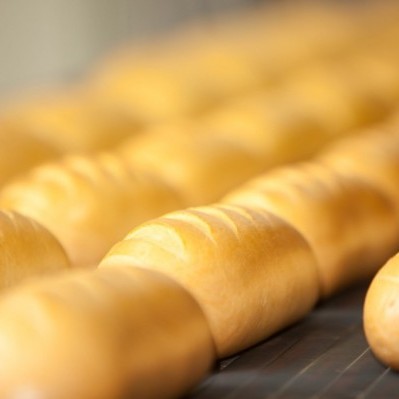
Continuous Mixing
What is Continuous Mixing?
Continuous mixing is a type of bread production system intended for high-speed bakers specialized in producing very large quantities of bread, buns and other baked goods. The main characteristics of continuous mixing:
- Uses highly specialized equipment with low production flexibility
- Requires a high degree of process automation for process control, bulk handling and ingredients metering
- Creates a very homogeneous dough for makeup as divider continuously receiving freshly mixed dough, reducing the chances of over-fermentation
- Has minimum product changeovers, maximizing oven efficiency and equipment utilization
- Requires limited manpower (human-machine interaction is rather low)
- Lower energy consumption compared to traditional batch-type mixers
How it works
Continuous mixing systems typically have two components: an ingredients pre-mixer and a dough developer, connected in series.
Pre-mixer
In this stage, dry and liquid ingredients (all in bulk) are fed into the premixing chamber for even distribution of water, and proper hydration of the flour and other dry minors and micros. In the case of preferments, the liquid preferment or brew is pumped into the premixing chamber, where the remaining flour and other ingredients are metered in. The premixer has an endless screw, auger or paddles connected to a shaft that provides the initial blending of the dough. The mixture does not experience an increase in temperature while in the premixer.
Developer
A slow-moving auger in the premixer moves the dough into the developer, an enclosed mixing chamber or barrel usually jacketed for temperature control. The developer takes the place of conventional horizontal and vertical mixers, as it mechanically develops the dough using endless screws or augers. As the dough is pushed through the shaft pins, it is developed and aerated. Dough temperatures usually reach 32–38°C (90–100°F). High-speed rotating screws, moving up to 500 rpm, bring about rapid dough development. This pressure, high friction and shear force from the high rpm generate the high-temperature dough.
Application
Typical high-speed mixing operation consists of four primary operations:
- Delivering macros or bulk ingredients (water, flour, sugar) to the mixing area
- Measuring ingredients placed in the mixer
- Mixing the ingredients into a dough
- Dough handling and conveying to the makeup stage
In a batch mixing process, these four operations often are treated, designed and implemented separately. Measuring the flour is the responsibility of the bulk delivery system. Measuring other ingredients (e.g. micros and yeast) is often done by bakery personnel that are designated to deliver ingredients quickly but not necessarily accurately. The dough once fully developed exits the mixer in a large batch that requires extended time to divide.
Continuous mixing, on the other hand, integrates all four operations into a single process. Bulk delivery, metering, mixing and dough handling stop are eliminated. Dough is discharged from the mixer as a continuous stream rather than one large batch every 10 to 15 minutes. It is this integration of key operations that allows continuous mixing to supply a more constant stream of dough to the oven.
This technology is recommended to bakers who
- Need to produce very high product volumes (20,000 to 30,000 loaves of bread per hour, or 90,000 to 120,000 buns or rolls per hour).
- Have a very specific need to drastically improve consistency of product volume and crumb grain. Most quick-service and restaurant (QSR) chains require the lowest variability in product characteristics.
- Only produce a few products on the same line (e.g. buns or pan bread) so product changeovers are minimum. Continuous mixing systems are at their best when operating without many changes for long periods of time. Most continuous mixing systems typically involve a dedicated line.
Continuous mixing systems need to be limited to a maximum of one or two major changeovers per day. Changeovers are periods of time in between production runs during which the equipment must be washed down before another dough can be made. Reasons for changeovers include allergens, different product color, fruits and bran inclusions, etc. Minor changes, however, where the second dough can push out the first dough, are well suited for continuous mixing.

